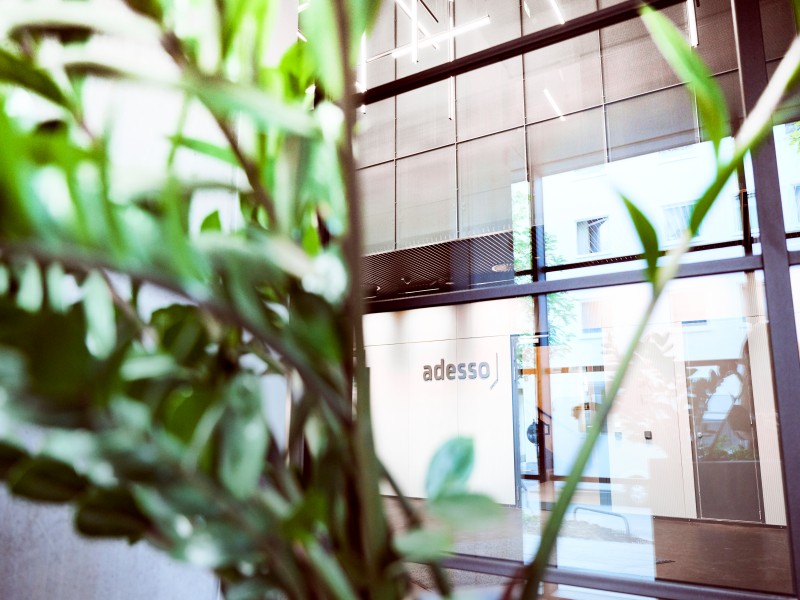3. September 2025 By Gabriel Sedlmayer
Twin Transformation: Digitalization and Sustainability
Digitalization is fundamentally reshaping the economy—just as rising sustainability demands and looming climate goals for 2050 are doing the same. What were once treated as separate domains are increasingly converging into a unified transformation path: the Twin Transformation. Especially in today’s global climate, where sustainability is losing priority in some regions, these synergies are more valuable than ever. The concept of Twin Transformation recognizes that digital innovation is both a foundation and an opportunity to operate in more ecologically, socially, and economically sustainable ways. Sustainability goals should guide meaningful and future-ready digital initiatives—particularly when it comes to deploying AI.
But how can this dual transformation be successfully implemented?
What Is Twin Transformation?
Twin Transformation means implementing digitalization and sustainability simultaneously, in a coordinated and mutually reinforcing way. It is not just about making digital processes more efficient or resource-friendly but also about actively advancing sustainability through technological means. There are different types of goal relationships between digitalization and sustainability, as shown in Figure 1. Advancing digitalization can exhibit complementary, competing, or neutral relationships with sustainability. While competing relationships—such as the increased energy demand of data centers—can negatively impact sustainability, complementary relationships represent the ideal scenario of Twin Transformation.
Examples of successful Twin Transformation initiatives:
- Using AI to optimize energy and material consumption
- Leveraging data platforms for sustainability reporting and CO₂ analysis
- Smart grids that dynamically manage electricity consumption and supply
- IoT and sensor-based systems to control lighting, heating, and ventilation
- Digital twins to simulate real-world processes and reduce resource use
- Energy-efficient cloud solutions and automated monitoring systems
Why Twin Transformation Matters for Switzerland
Switzerland faces a unique convergence of factors: high prosperity, advanced digital maturity across industries, and increasing regulatory and societal pressure around sustainability.
Key drivers:
- In competitive markets, efficiency and sustainability are becoming key differentiators.
- The Corporate Sustainability Reporting Directive (CSRD) affects Swiss companies operating internationally, requiring more comprehensive and standardized sustainability reporting.
- Stricter regulations like the revised CO₂ ordinance, the new climate protection law, and FINMA’s ESG disclosure requirements are pushing companies to be more transparent about their environmental performance.
- Customers and investors are demanding credible, climate-responsible business practices.
Companies that strategically integrate digitalization and sustainability are better equipped to handle regulatory shifts, resource shortages, and market volatility. However, Switzerland’s federal structure, diverse industries, and strong service and manufacturing base present unique challenges. Standard solutions often fall short—transformation must be data-driven, differentiated, and strategically anchored.
Embedding Twin Transformation Strategically
A common pitfall is separating digital and sustainability initiatives. Often, teams work with different tools, goals, timelines, and priorities—missing out on synergies and duplicating efforts.
Twin Transformation requires:
- Strategy: Embed sustainability directly into digitalization strategies.
- Technology: Use applications to measure impact, increase transparency, and reduce reporting burdens.
- Procurement: Evaluate technical decisions based on ecological and social impact.
- Innovation: Treat sustainability as a driver of innovation. Today, innovation means more than efficiency—it demands responsibility, traceability, and sustainability.
- Competitiveness: Be proactive, not reactive. Respond quickly to new developments to stand out from competitors.
This leads to a new understanding of innovation—one that values not just speed and efficiency, but also responsibility, transparency, and long-term viability.
Sustainably Digital – Digitally Sustainable
Twin Transformation is not a trend—it reflects a business and societal reality in which Swiss companies must increasingly demonstrate how they strategically link digitalization and sustainability.
When done right, this dual transformation leads to more resilient business models, better regulatory agility, long-term innovation capacity, and greater public acceptance. The question is no longer if, but how. What matters most is the courage to think about digitalization and sustainability together—strategically.

